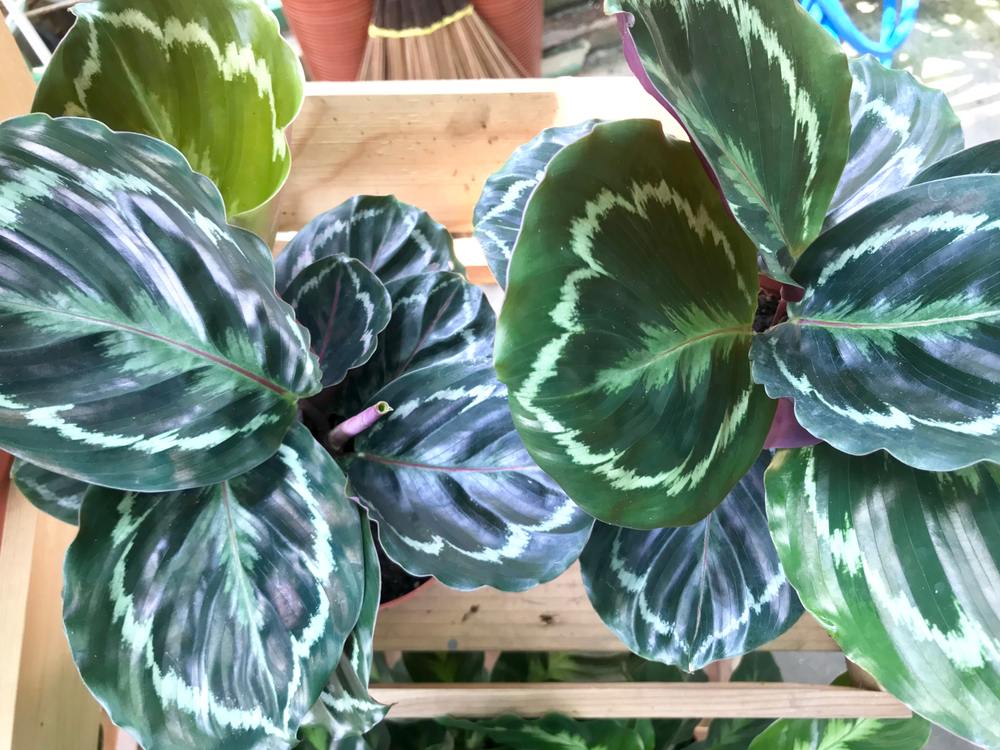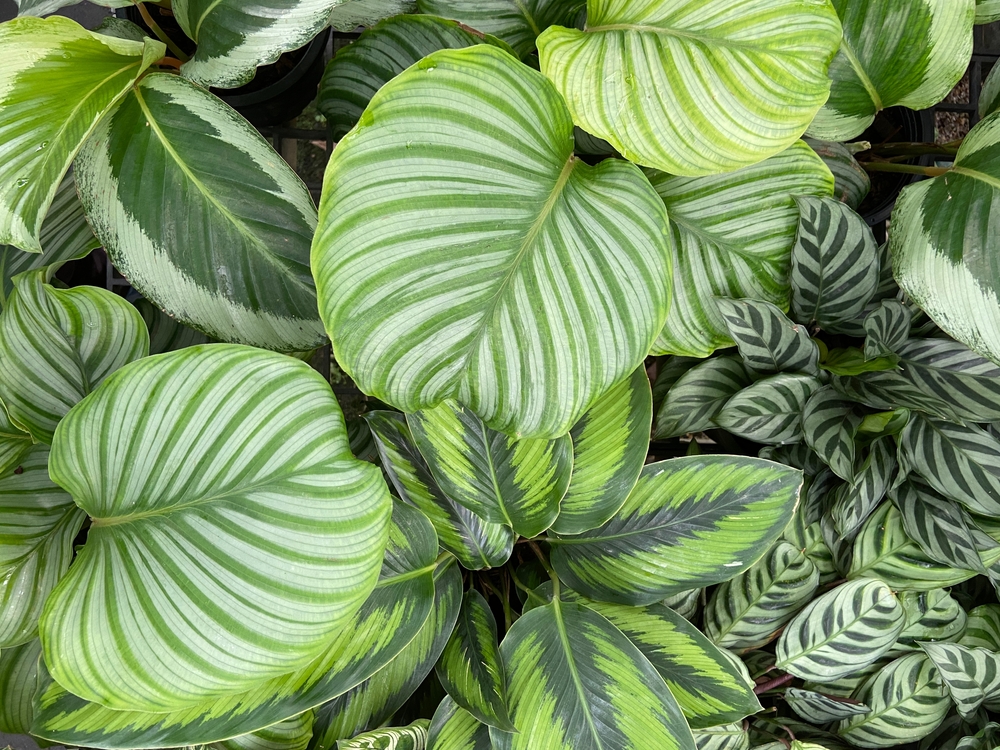🌿 Why Calatheas Are the Perfect Houseplant for Any Home
From the lush rainforests of South America to the shelves of stylish UK homes, the Calathea has earned a loyal following thanks to its vibrant foliage and dynamic character. Whether you’re a seasoned plant parent or just getting started, the Calathea is a rewarding addition to any indoor jungle, as long as you know how to meet its needs.
That’s why Beards & Daisies, one of the UK’s leading houseplant specialists, is here to help you get the most from your Calathea. Founder Jo Lambell shares what makes this plant so special, while Lead Horticulturist Connor Towning, offers practical care tips to keep yours happy, healthy, and thriving in your home.
Calatheas are more than just eye-catching. They are expressive, low-light tolerant, and completely non-toxic, making them ideal for pet-friendly homes. Here’s why they’re worth a spot in your plant collection:
- Decorative appeal: With beautiful patterns, colours, and textures, Calatheas bring a vibrant, tropical feel to interiors.
- Low-light adaptability: Unlike many houseplants, Calatheas prefer indirect light, making them great for shadier rooms.
- Pet-safe: They are non-toxic to cats and dogs, so you don’t have to worry about curious paws or nibbles.
- Interactive nature: Some varieties move their leaves in response to light, adding a dynamic element to your space.
Calathea Care Guide

Calatheas can be a little fussy, but with the right environment and routine, they will thrive. Here’s what they need:
Light: Calatheas prefer bright, indirect light. Avoid direct sunlight as it can scorch their delicate leaves.
Tip from Connor Towning: Place them near a north or east-facing window. If the room is too bright, diffuse the light with a sheer curtain.
Watering: They like consistent moisture, but not soggy soil. Water when the top inch of soil feels dry, using room-temperature, filtered or rainwater if possible. Avoid tap water high in fluoride or chlorine as it can cause leaf browning.
Humidity: High humidity is essential. Aim for around 60 percent or more.
Ways to increase humidity:
- Group your plants together
- Use a pebble tray with water
- Mist lightly (but not excessively)
- Use a humidifier during dry months
Temperature: Keep them in a warm, stable environment between 18 and 24 degrees Celsius. Avoid drafts, radiators, or sudden drops in temperature.
Soil and Feeding: Use a well-draining, peat-free potting mix. Feed once a month in spring and summer with a diluted liquid houseplant fertiliser.
Leaf Maintenance: Wipe the leaves occasionally with a damp cloth to remove dust and allow them to photosynthesise efficiently.
Common Issues and Fixes:
- Brown leaf edges: Usually caused by low humidity or poor water quality.
- Curling leaves: This could mean it’s too cold or the soil is too dry.
- Drooping: Calatheas can naturally droop at night and perk up again in the morning. If drooping is persistent, check moisture and humidity levels.
Which Calathea Variety Should You Choose?
There are many great varieties. Here are a few popular choices:
- Calathea Orbifolia – Known for its oversized, rounded leaves with silver and green striping. A bold, architectural choice that suits minimalist or Scandinavian interiors.
- Calathea Makoyana – Often called the “Peacock Plant,” this variety features feather-like markings and translucent leaves that glow when backlit. Perfect for adding softness to a bright corner.
- Calathea Triostar – Technically a Stromanthe, but often grouped with Calatheas, this variety is prized for its variegated pink, cream, and green leaves. A vibrant pick for modern or eclectic spaces.
- Calathea Sandariana – Also known as Calathea White Star, this variety has elongated leaves with delicate white pinstripes. Ideal for neutral-toned rooms in need of contrast.
- Calathea Rose Painted – With dark green leaves brushed in pink, cream, and burgundy, this variety adds a rich, artistic flair. Pairs beautifully with earthy ceramics and warm woods.
- Prayer Plant (Calathea Lancifolia or related Maranta varieties)
Named for its movement at night, this plant’s long, patterned leaves add motion and texture. Great for bookshelves, plant stands, or grouped displays.
“Each variety has its own personality” says Jo. “Choose one that suits your space and your aesthetic.”
Crave Magazine: your essential guide to the best in UK lifestyle, food and travel.





